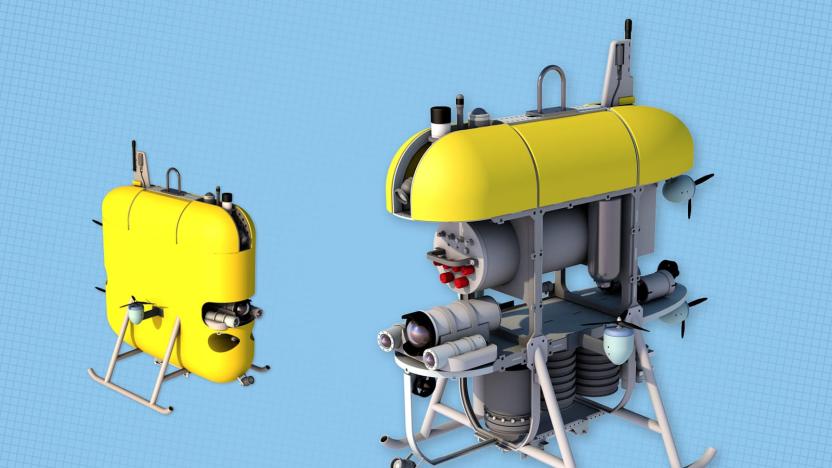WoodsHoleOceanographicInstitution
Latest

Sneaky deep sea robot will take pics of fish without spooking them
Robots typically aren't good choices for studying deep sea animals like jellyfish -- not when their light, noise and movement can scare away those creatures. Researchers at Woods Hole Oceanographic Institution may have a far less intrusive option, though. Their planned Mesobot observer is designed to move as quietly as possible while collecting data about aquatic life. The four-foot-tall robot moves using six large but low-power thrusters that won't cause a stir, and its LED lights can switch to red (which many deep sea species can't see). A two-day running time should also minimize attention-getting trips to the surface.

Undersea robots find key clue to a mysterious shipwreck
Robots just helped shed light on a maritime tragedy. The US Coast Guard, National Transportation Safety Board and Woods Hole Oceanographic have used both an autonomous underwater vehicle (AUV) and a fiber-controlled craft to find the voyage data recorder of the El Faro, a cargo ship that sank near the Bahamas during Hurricane Joaquin last October. That's no mean feat when its remains are 15,000 feet deep, and the recorder is roughly the size of a coffee can. The recovery should not only help explain the exact circumstances of the El Faro's final moments, but provide some closure to the families of the 33 crew members that lost their lives.

Oceanographers invent device that tracks even the tiniest jellyfish
With barely two percent of the seafloor explored, we know a whole lot less than we'd like to about the Earth's oceans and its myriad of residents. Among the more numerous but less studied oceanic animals are soft-bodied like squid, octopi and jellyfish. However thanks to a new tracking tag technology developed at the Woods Hole Oceanic Institute, marine biologists will be able to observe these delicate denizens of the deep as they never have before.

